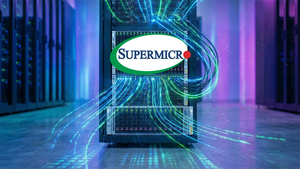Words by 3p Editors
SOURCE: TriplePundit
DESCRIPTION:
With 87 percent of the world’s transaction revenue touching its software at some point, the leading software company SAP is in a unique position to accelerate the transition to a circular economy. To that end, SAP recently introduced a new solution, SAP Responsible Design and Production that is co-developed with Accenture. SAP Responsible Design and Production emphasizes the need for regenerative practices alongside the reduce-reuse-recycle formula.
Two partners positioned to lead on circularity
SAP is known for its leading role in the area of Enterprise Resource Planning (ERP), a field that fosters communication and collaboration between the various branches of a business and its ecosystem. ERP breaks down the silos that define areas of responsibility in a conventional business model, enabling planners to develop whole-of-operations strategies.
Meanwhile, the global professional services firm Accenture has been taking the lead on promoting the circular economy since 2015 when it published the book Waste to Wealth. A follow-up book, The Circular Economy Handbook, came out in January 2020.
According to Peter Lacy, Global Sustainability Services Lead and Chief Responsibility Officer of Accenture, “The circular economy offers a powerful way forward: a massive transformation from the traditional linear ways of doing business to new principles of circularity. It fundamentally decouples economic growth from resource usage and recouples economic growth with societal progress – presenting a much-needed framework for tackling our global challenges. That is why I’m so excited about SAP and Accenture’s partnership. It aims to truly move the needle for our clients while recognizing that we need to go way beyond net zero and carbon to energy, water, waste, deforestation, ocean pollution and indeed protecting biodiversity and being nature positive in our global value chains. The growing focus on climate change and net zero is very welcome, but it’s not enough. Measuring, managing and delivering the circular economy is a big step forward for business.”
Accenture maintains that companies must ensure responsible business practices — not only within their own four walls, but also across their value chains — in order to meet changing consumer expectations. “It’s no longer enough for companies to focus only on what they control directly,” the company asserts. “Customers will hold them responsible for any slip ups around their products, even when those mistakes are made by a partner company.”
These shifting consumer expectations are also hastening the transition toward circular models. “Evolving consumer attitudes are one of the key factors driving the growing importance of the circular economy,” a recent Accenture analysis reads. “People now want to use more sustainable products that are recycled and bio-based. Meanwhile, brand owners are watching evolving consumer preferences on circularity and taking a leading position in making voluntary commitments to circular economy goals. Investors are increasingly likely to factor in a company’s impact on society and the environment to determine its worth.”
What is SAP Responsible Design and Production?
The world creates over 2 billion tons of waste each year, at least a third of which is not reused or recycled, contributing to more than 45 percent of global carbon emissions and 90 percent of biodiversity loss. Businesses that continue along this pathway will find themselves reacting to new regulations instead of proactively running ahead of the curve.
Extended producer responsibility, or EPR, is among these emerging policy approaches aimed at curbing the waste crisis. As the name implies, extended producer responsibility makes manufacturers physically or financially responsible for the entire lifecycle of their products, including the waste they create. EPR legislation has now become a global trend, affecting industries including consumer packaged goods, retail, fashion, chemical, technology and automotive, SAP observes.
More than 400 EPR schemes and plastic taxes are in place or planned around the world. Generally, these schemes require companies to pay fees based on their packaging or plastic volume in a market, with funds going to support local waste management, collection and recycling activities. But each locality does this in their own way, creating a market-by-market challenge for large producers. As the regulation, tax and EPR fee landscape grows increasingly complex, manual data collection, analysis and reporting cannot keep up.
Stéphanie Guimbellot, managing director at Accenture and global lead for SAP Sustainability and Innovation, added that “Because SAP Responsible Design and Production directly leverages data from core ERP processes, it enables determining waste compositions and calculating EPR fees across numerous product lines as well as adhering to a growing number of different extended producer responsibility declaration schemes.
In response to these policy developments and increasing demand from more informed, environmentally aware consumers, a growing number of companies and their executives have signed on to public environmental pledges, including commitments to curb plastic pollution.
Still, no single company or industry can achieve circularity on its own — and the growing complexity of the regulatory landscape requires new solutions to properly manage costs and minimize risk. By analyzing the impacts associated with plastic tax and EPR regulations and improving design choices, technology can help companies to reduce waste, drive down costs and mitigate fees to provide significant financial benefit.
The new SAP Responsible Design and Production solution helps customers with the sustainable design and responsible management of materials and products so that they can accelerate their transition to a more circular economy: cutting waste and other forms of pollution, reusing and reclaiming materials, and regenerating nature.
The cloud-based solution gives companies greater visibility into the material flows in their processes — including raw materials, packaging and downstream impacts — illuminating opportunities to reduce waste and design products to be sustainable from the start. Importantly, companies can also use the platform to track and comply with rapidly changing regulations, including those related to EPR.
Greater visibility helps companies eliminate packaging waste
It is complicated — and expensive — to redesign packaging across thousands of products sold in various markets around the world. The up-front cost of making changes may have deterred companies in the past, but new regulations are tipping the scale. One study estimates that EPR costs for product packaging could exceed $3.5 billion annually in the U.K. alone, Natasha Pergl, lead for global circular economy at SAP, observed in a company blog.
Simply put: These are not small numbers, and it’s only going to get more expensive for companies to continue creating waste. “Do the math, and you’ll see the global impact,” Stephen Jamieson, the company’s global lead for circular economy solutions. “Some of the larger manufacturers produce thousands of tons of materials each year. In these markets, you’re talking about very meaningful numbers.”
Forward-looking companies have already proven that the up-front investments pay off. Unilever, for example, estimates it has cut costs by $1.5 billion since 2008 by improving efficiencies in factories and using fewer materials. As more companies agree, co-developments like the SAP Responsible Design and Production platform can help.
With access to a birds-eye view of their operations, overlaid with public policies, companies can identify the right tradeoffs and move their products closer to circularity. Some may see opportunities to transition their plastic packaging toward resins that are more readily recyclable, for example, while others may find ways to incorporate recycled plastics, eliminate unnecessary single-use packaging altogether, or move toward reuse and re-commerce models.
Beyond product and packaging design, embedded analytics enable EPR experts at large global companies to accurately comply with packaging regulations in each market they serve and allow for people like chief sustainability officers to see progress toward company commitments, Pergl explains.
Further, the fact that the solution is co-developed with the combined expertise of SAP and Accenture offers several benefits, including a faster time-to-market for new releases and an opportunity for the companies’ vast network of clients to offer feedback that will improve the product.
The bottom line
“There is inherent complexity in designing products that eliminate waste and use responsible materials,” Scott Russell, executive board member and head of customer success at SAP, explained in a statement. “To become regenerative, companies need to manage impact on the environment (e.g. deforestation, water) and social capital (e.g. ensuring living wages, addressing skills, training and digital inclusion),” SAP added.
In the end, leadership will determine how quickly companies can adapt to the circular, regenerative economy of the future. CEOs who stake their company’s reputation on environmental pledges will need to ensure the words on paper come to life in the form of deep, substantial changes in the way they do business. This new solution could be an important tool in their toolkit.
This article series is sponsored by SAP and Accenture and produced by the TriplePundit editorial team.
Image credit: malp/Adobe Stock
KEYWORDS: triplepundit, SAP, Accenture







